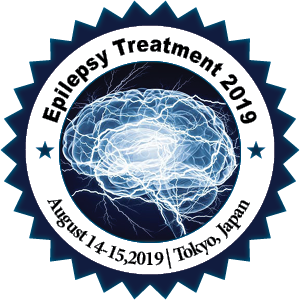Biography
Biography: Ahmad Marashly
Abstract
Epilepsy is a group of neurological disorders in which neurons��? signaling is corrupted. This condition characterized by a longterm risk of recurrent seizures and affects up to 1% of the general population. There are various genetic and environmental factors such as neuromuscular disorders, brain injury and abnormal brain development that resulted in epilepsy. More than 20 single gene syndromes and conditions whose main feature is epilepsy, or at least epilepsy is one of the significant manifestation, have been described. These neonatal or childhood syndromes manifest neurodegenerative lesions and majority of them shows autosomal dominant pattern of inheritance. These syndromes are: Autosomal dominant partial epilepsy with variable foci, autosomal dominant nocturnal frontal lobe epilepsy, benign familial neonatal convulsions, benign infantile familial convulsions, familial temporal lobe epilepsy, generalized epilepsy with febrile seizures plus, progressive myoclonic epilepsies (PMEs)-group of progressive neurological deterioration together with myoclonus and epilepsy autosomal recessive disorders-, neurofibromatosis 1 (NF-1) as a result of neuronal migration abnormalities in which approximately up to 13% of patients -1 develop epilepsy, tuberous sclerosis a complex disorder in which about 80% of affected manifest epilepsy, X-linked fragile X syndrome which develop mental retardation in affected male and up to 40% of patents develop epilepsy, X-linked dominant Rett syndrome a neurodevelopmental disorder in which about 70% to 80% of cases develop epilepsy, leukodystrophies, acute intermittent porphyria, inherited metabolic conditions like mucopolysaccharidoses. All of the aforementioned conditions show epilepsy as one their symptom but their differences are specific manifestations and age of onset. Understanding and distinguish each condition leads to appropriate management, diagnosis and therapy.

